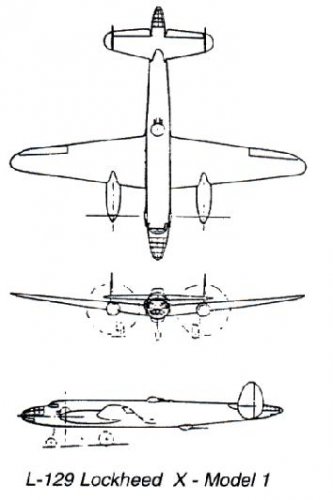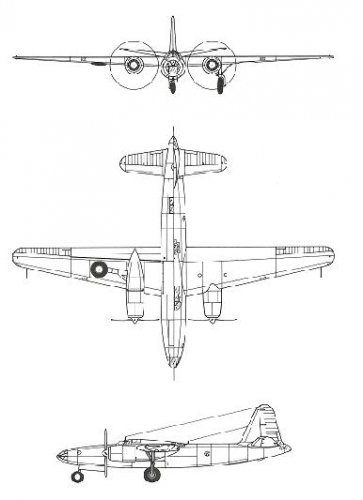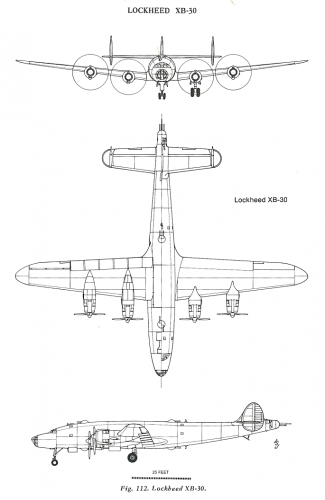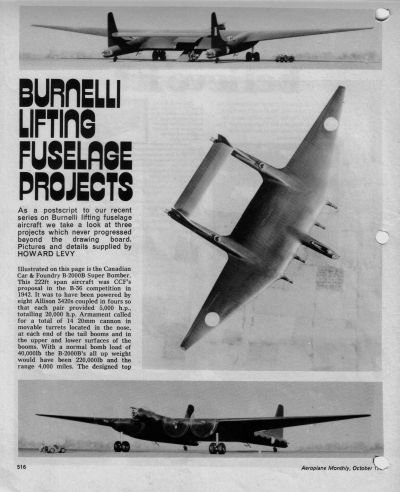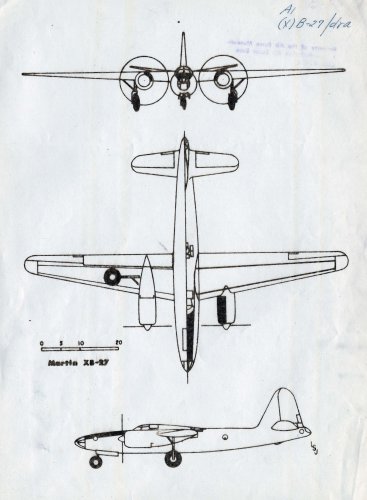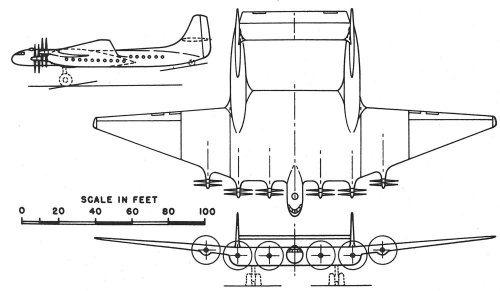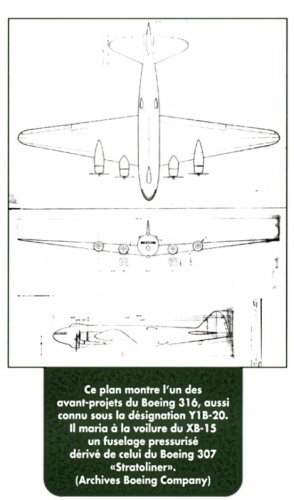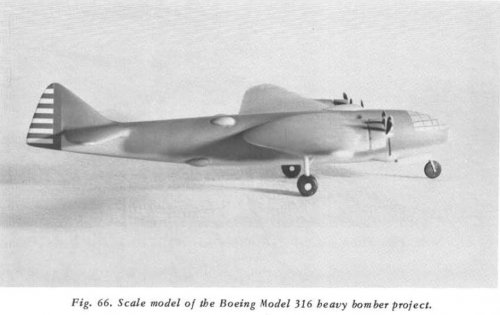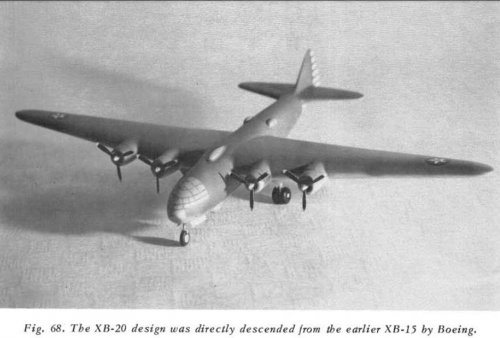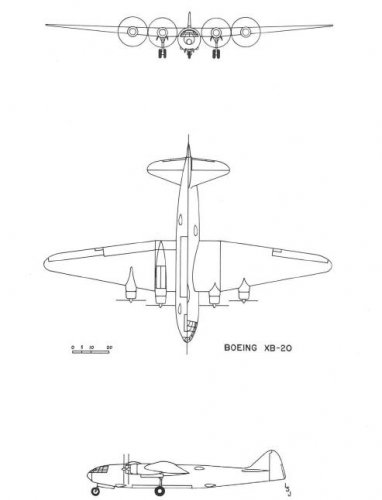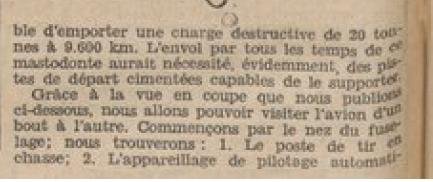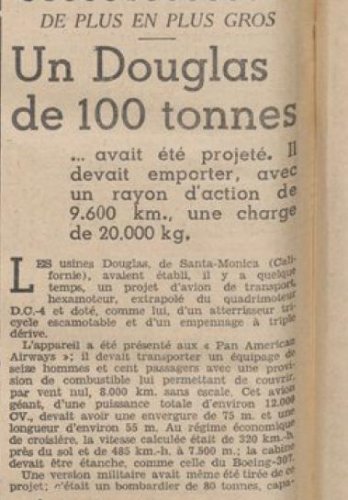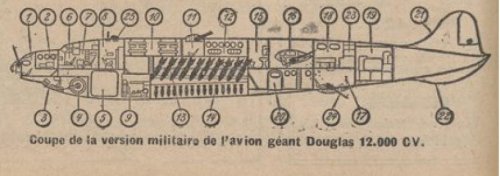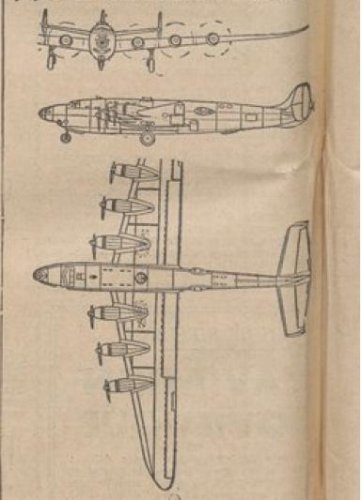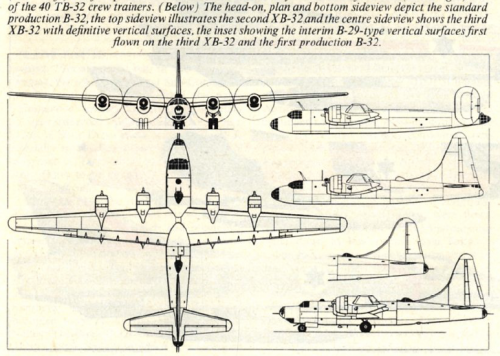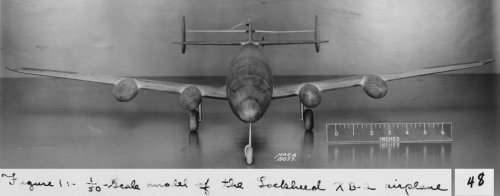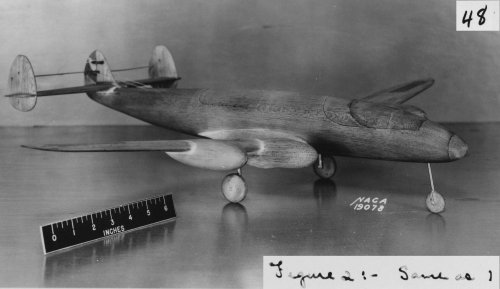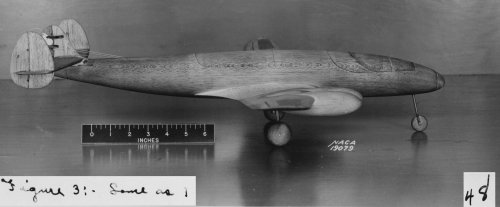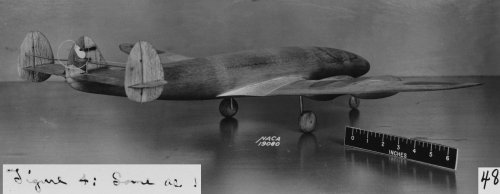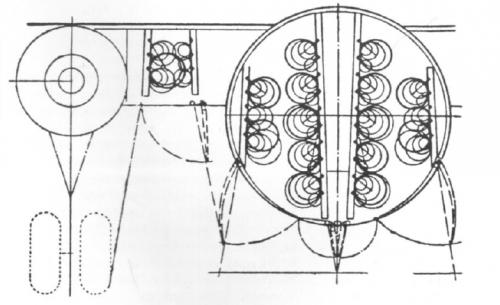You are using an out of date browser. It may not display this or other websites correctly.
You should upgrade or use an alternative browser.
You should upgrade or use an alternative browser.
US Bombers
- Thread starter Antonio
- Start date
-
- Tags
- bomber crash ground attack martin
- Joined
- 26 May 2006
- Messages
- 34,921
- Reaction score
- 15,794
Hi,
in Specification XC-214 for high altitude bomber of 1939,the contenders
were Hughes DX-2,Lockheed L-129,Martin Model-182 XB-27 and North
American NA-63 XB-28,I can imagine that the Hughes DX-2 was developed
from D-2,but bigger and longer,who can drawing a big version from D-2
as a bomber ?.
Pictures added from a later post by hesham
in Specification XC-214 for high altitude bomber of 1939,the contenders
were Hughes DX-2,Lockheed L-129,Martin Model-182 XB-27 and North
American NA-63 XB-28,I can imagine that the Hughes DX-2 was developed
from D-2,but bigger and longer,who can drawing a big version from D-2
as a bomber ?.
Pictures added from a later post by hesham
Attachments
- Joined
- 14 June 2006
- Messages
- 2,300
- Reaction score
- 561
Hesham, the first tunnel model here http://www.secretprojects.co.uk/forum/index.php/topic,5974.msg49855.html#msg49855, the one with the twin-tail, is the bomber, or so the caption mentioned a few post below, says. Maybe I have a sketch from the Tornado (the engine) book, already mentioned in the XP-58 thread (BTW, highly recommended).
- Joined
- 26 May 2006
- Messages
- 34,921
- Reaction score
- 15,794
Thank you my dear Skybolt,
also for USAAC Circle Proposal 39-640 for medium bomber,the contenders
were Douglas,Martin Model-179 B-26,North American NA-62 B-25 and
Stearman,what was the Douglas and the Stearman proposals ?.
We know Stearman up to X-120,and from X-130 to X-190 were
unknown,the X-200 was Boeing/Stearman XL-15.
also for USAAC Circle Proposal 39-640 for medium bomber,the contenders
were Douglas,Martin Model-179 B-26,North American NA-62 B-25 and
Stearman,what was the Douglas and the Stearman proposals ?.
We know Stearman up to X-120,and from X-130 to X-190 were
unknown,the X-200 was Boeing/Stearman XL-15.
Cobra Kebab
ACCESS: Restricted
- Joined
- 27 January 2008
- Messages
- 31
- Reaction score
- 1
- Joined
- 25 June 2009
- Messages
- 14,755
- Reaction score
- 6,157
On the chapter of excellent bomber designs that never were, a report dated 19 September 1939 about the Burnelli X-BAB-3 design concludes to the following:hesham said:The Burnelli X-BAB-3 attack bomber project which was involved in a competition led to develop Douglas A-20.
The high speed possibilities of a 0.16 scale model of the Burnelli Aircraft Corporation XB-AB-3 design were investigated in the N. A. C. A. 8-foot high speed wind tunnel at Mach numbers from 0.18 to 0.65 (...) From studies of the research made by the Burnelli Co., the NACA and the Air Corps, the Military adaptability of the basic design has the following advantages over the orthodox streamlined dead-weight fuselage.
1. The coefficient of drag is the lowest known for any useful airplane today.
2. The coefficient of lift is greater.
3. The lifting fuselage has distinct advantages for the installation of power plants, bombs, armament and all other accessories over the streamlined fuselage.
4. From wind tunnel tests already conducted by the NACA and NYU the performance is exceptionally good in every phase.
5. The design embodied extremely good factors of safety -- considerably higher than the streamlined fuselage type.
6. The design is simple of construction and in the opinion of the Air Corps lends itself to high speed production better than any design and therefore the valuable time element involved in all production contracts can be taken advantage of to its fullest extent.
7. It is apparently a cheaper airplane to build because of the time element referred to in 6 above.
(emphasis added)
A more detailed summary of the report can be read here:
http://www.aircrash.org/burnelli/xbab3.htm
It is sad that the history of aircraft procurement is ripe with similar stories of superior designs that were turned down for the wrong reasons and/or by the wrong people. In this particular case, one wonders if the USAF didn't simply want to give their regular contractors a bone to chew. And if the question was Burnelli's incapacity to have the aircraft mass-produced, it would have been easy to sub-contract it to anyone else, like the USAF soon did with every mass-produced aircraft, anyway. Or maybe that's because Burnelli was a Canadian-based, not US-based, interest?
An excellent reference online for Burnelli's designs: http://www.burnelli.com/
- Joined
- 14 June 2006
- Messages
- 2,300
- Reaction score
- 561
Please, no "conspiration against Burnelli" posts, please...
The NACA reports i here: http://hdl.handle.net/2060/19930092656
An interesting review rom 2003 of the contributions of Vincent Burnelli to aircraft design http://hdl.handle.net/2060/20030004233
The NACA reports i here: http://hdl.handle.net/2060/19930092656
An interesting review rom 2003 of the contributions of Vincent Burnelli to aircraft design http://hdl.handle.net/2060/20030004233
- Joined
- 25 June 2009
- Messages
- 14,755
- Reaction score
- 6,157
I wasn't even aware there was such a thing as a "Burnelli conspiracy theory"!!!
I just find it sad that such great engineers and visionaries were forever estranged from the main civil and military procurements, not for lack of performance or faulty design, but because they did not belong "to the fold" or followed a more original path.
I just find it sad that such great engineers and visionaries were forever estranged from the main civil and military procurements, not for lack of performance or faulty design, but because they did not belong "to the fold" or followed a more original path.
- Joined
- 14 June 2006
- Messages
- 2,300
- Reaction score
- 561
Well, it is not the place in this thread (there is a dedicated topic elesewhere), but the way Burnelli designed aircrafts was expensive on the side of drag in days were the engine power wasn't so cheap. The B2000B needed 8 W3420s coupled in pairs (normal rating total 20.000 HPs) in 1942 to give the same performance of the XB-36 (6 R-4360s rated 2600 HPs in 1942).
Just call me Ray
ACCESS: Top Secret
- Joined
- 26 August 2007
- Messages
- 672
- Reaction score
- 55
The XB-30's glass nose looks like it's been lifted from the B-24.
- Joined
- 30 November 2007
- Messages
- 1,126
- Reaction score
- 592
The Lockheed B30 looks like a "minimum effort" conversion of the standard Lockheed Constellation airliner; which although an exceptional aircraft surely wouldn't have been competitive with a purpose designed/built bomber like the B29. Does anyone know how serious Lockheed were being with this proposal. As one who has studied the Constellation quite instensely, I cannot see where a bomb-bay would fit in around the wing-centre-section......
Terry (Caravellarella)
Terry (Caravellarella)
- Joined
- 8 January 2006
- Messages
- 1,612
- Reaction score
- 763
You'd need some some strong fuselage frames in that area to carry the wing loads as sell as frame the bomb bay. I'd think the design would lend itself more to bomb bays ahead of and behind the wing carry-thru structure (the one ahead of the wing would likely be much like the Orion's weapons bay (as compared to the airliner it was derived from, the Electra) and the one behind the wing would be similar. I rather suspect the major lines would've remained the same between the L-09 and the B-30, allowing some of the same jigs and fixtures (possiibly even some of the same skin panels) to be used, but the structure likely would have needed redesigning to military standards. I see this more as an adaptation of existing and proven lines rather than a simple conversion.
lucamax
ACCESS: Secret
hesham said:Hi,
Anther James Taylor bomber transport aircraft of 1940.
Hi,
Can you tell me the patent number of thisi aircraft? Thank you very much
Demon Lord Razgriz
ACCESS: Confidential
- Joined
- 31 October 2008
- Messages
- 188
- Reaction score
- 14
That very first picture in the opening post, does anyone have any data or other pictures on that plane?
- Joined
- 14 June 2006
- Messages
- 2,300
- Reaction score
- 561
I'd presume no-one... otherwise it would have been already posted here.
Taylor patent: http://www.google.com/patents?id=wURyAAAAEBAJ&zoom=4&dq=james%20taylor%20airplane&pg=PA1#v=onepage&q=james%20taylor%20airplane&f=false
and here is the six engine version:
http://www.google.com/patents?id=wkRyAAAAEBAJ&zoom=4&dq=james%20taylor%20airplane&pg=PA1#v=onepage&q=james%20taylor%20airplane&f=false
It's easy, just use Google Patents...
Taylor patent: http://www.google.com/patents?id=wURyAAAAEBAJ&zoom=4&dq=james%20taylor%20airplane&pg=PA1#v=onepage&q=james%20taylor%20airplane&f=false
and here is the six engine version:
http://www.google.com/patents?id=wkRyAAAAEBAJ&zoom=4&dq=james%20taylor%20airplane&pg=PA1#v=onepage&q=james%20taylor%20airplane&f=false
It's easy, just use Google Patents...
lucamax
ACCESS: Secret
Thank you! I'm sorry, but I dont know how to find the patents in Google patents: I search but I rarely find something interesting..
XP67_Moonbat
ACCESS: Top Secret
- Joined
- 16 January 2008
- Messages
- 2,272
- Reaction score
- 544
Another new type (well, new to me anyways) I just learned about, the Martin XB-27:
http://www.nationalmuseum.af.mil/factsheets/factsheet.asp?id=2573
http://www.nationalmuseum.af.mil/factsheets/factsheet.asp?id=2573
Attachments
- Joined
- 13 June 2007
- Messages
- 2,173
- Reaction score
- 3,096
Not so much a bomber I think Mark, but...
...B-2000 lifting fuselage-express transport- with a span of 200feet en lenght of 110ft.
The Canadian Car & Foundry B-2000B was the bomber, powered by 8 Allison 3420 engines
and a span of 222ft.
According to The Aeroplane Monthly Oct.1980 it sould be a
proposal in the B-36 competion.
P.S. There is confusion between the B-1000 and B-2000 designs..
...B-2000 lifting fuselage-express transport- with a span of 200feet en lenght of 110ft.
The Canadian Car & Foundry B-2000B was the bomber, powered by 8 Allison 3420 engines
and a span of 222ft.
According to The Aeroplane Monthly Oct.1980 it sould be a
proposal in the B-36 competion.
P.S. There is confusion between the B-1000 and B-2000 designs..
- Joined
- 3 June 2006
- Messages
- 3,094
- Reaction score
- 3,966
The Boeing Y1B-20 (Model 316) was a development of the XB-15 design proposed by Boeing as a long-range heavy bomber.
Fact Sheets > Boeing Y1B-20
Attachment source: Le Fana de L'Aviation August 1999 (Number 357), page 15
Fact Sheets > Boeing Y1B-20
Attachment source: Le Fana de L'Aviation August 1999 (Number 357), page 15
Attachments
- Joined
- 2 January 2011
- Messages
- 345
- Reaction score
- 372
Re: Model 316 series
The drawing shown by fightingirish is the Model 316B but the XB-20 itself was based on the Model 316. There were, in fact, five different Model 316 derivatives, from the 316 to the 316D. This included several variations on bomber designs as well as variations on 4-engine airliner/transports.
According to Boeing documents the 316 was an outgrowth of the Model 294/XB-15. Personally, I don't see the connections, seeing more of the Boeing Model 307 than the 294 in the design. However, specific documents showing the relationship have yet to be found so we need to go by Boeing's explanation for the time being.
It is my belief that the Model 307 had a profound impact on Boeing bomber design up to and beyond the B-29/Model 345. The Model 307 set the standard at Boeing for high-altitude, pressurized fuselages with its rounded nose and round fuselage. Almost all the Boeing design studies from that point on utilized that basic combination.
AlanG
The drawing shown by fightingirish is the Model 316B but the XB-20 itself was based on the Model 316. There were, in fact, five different Model 316 derivatives, from the 316 to the 316D. This included several variations on bomber designs as well as variations on 4-engine airliner/transports.
According to Boeing documents the 316 was an outgrowth of the Model 294/XB-15. Personally, I don't see the connections, seeing more of the Boeing Model 307 than the 294 in the design. However, specific documents showing the relationship have yet to be found so we need to go by Boeing's explanation for the time being.
It is my belief that the Model 307 had a profound impact on Boeing bomber design up to and beyond the B-29/Model 345. The Model 307 set the standard at Boeing for high-altitude, pressurized fuselages with its rounded nose and round fuselage. Almost all the Boeing design studies from that point on utilized that basic combination.
AlanG
- Joined
- 22 January 2006
- Messages
- 4,216
- Reaction score
- 2,018
I agree with Lark!
US bomber development in the 30's is extremely interesting but unfortunately we only receive bits of information from time to time.
Many thanks ACResearcher for your sharing it
US bomber development in the 30's is extremely interesting but unfortunately we only receive bits of information from time to time.
Many thanks ACResearcher for your sharing it
- Joined
- 2 January 2011
- Messages
- 345
- Reaction score
- 372
Hesham, one needs to very carefully examine both 3-views (or all five in the case of the Model 316 series) and compare the location AND size of the various external gun blisters, wing position, tail shape, canopy shape and size, etc. While certainly related, they are not the same design.
AlanG
AlanG
- Joined
- 26 May 2006
- Messages
- 34,921
- Reaction score
- 15,794
- Joined
- 26 May 2006
- Messages
- 34,921
- Reaction score
- 15,794
lark said:A better 3 view can be seen in the Douglas XB-31 thread...
That's right my dear Lark.
- Joined
- 8 March 2009
- Messages
- 1,057
- Reaction score
- 1,299
Steve Pace
Aviation History Writer
- Joined
- 6 January 2013
- Messages
- 2,266
- Reaction score
- 225
Lockheed XB-30. -SPsienar said:From NACA; http://crgis.ndc.nasa.gov/historic/Building_646_Models
Strange designation
- Joined
- 26 May 2006
- Messages
- 34,921
- Reaction score
- 15,794
hesham said:that drawings are our knowledge about Boeing Model 316 (XB-20).
Was that the bombs storage for Boeing XB-20,I can't translate well.
Attachments
Similar threads
-
North American Aviation NA-98X 'Super Strafer'
- Started by robunos
- Replies: 30
-
98-102 / C-103A "Attack Bomber" spec (alternatives to the Douglas DB-7/A-20)
- Started by Stargazer
- Replies: 40
-
Early Martin 167 projects: genesis of the Maryland
- Started by Stargazer
- Replies: 2
-
-

